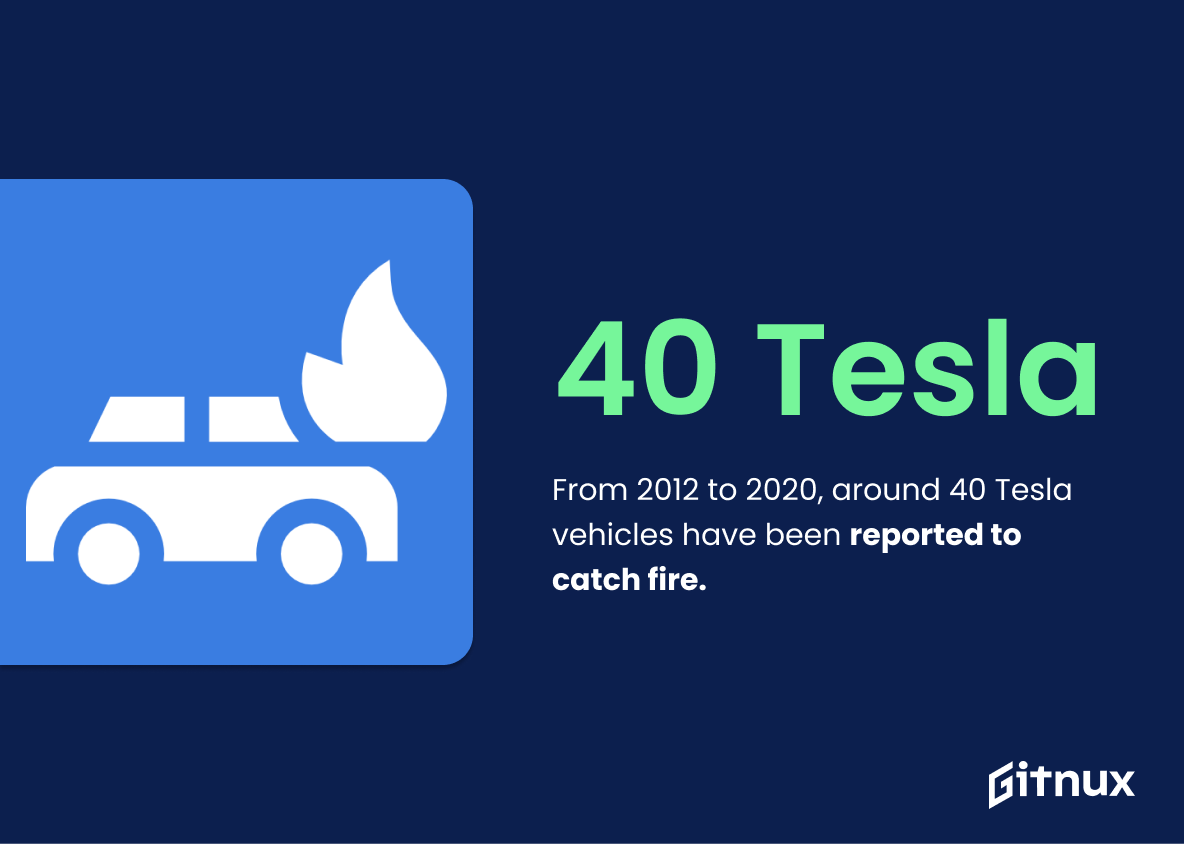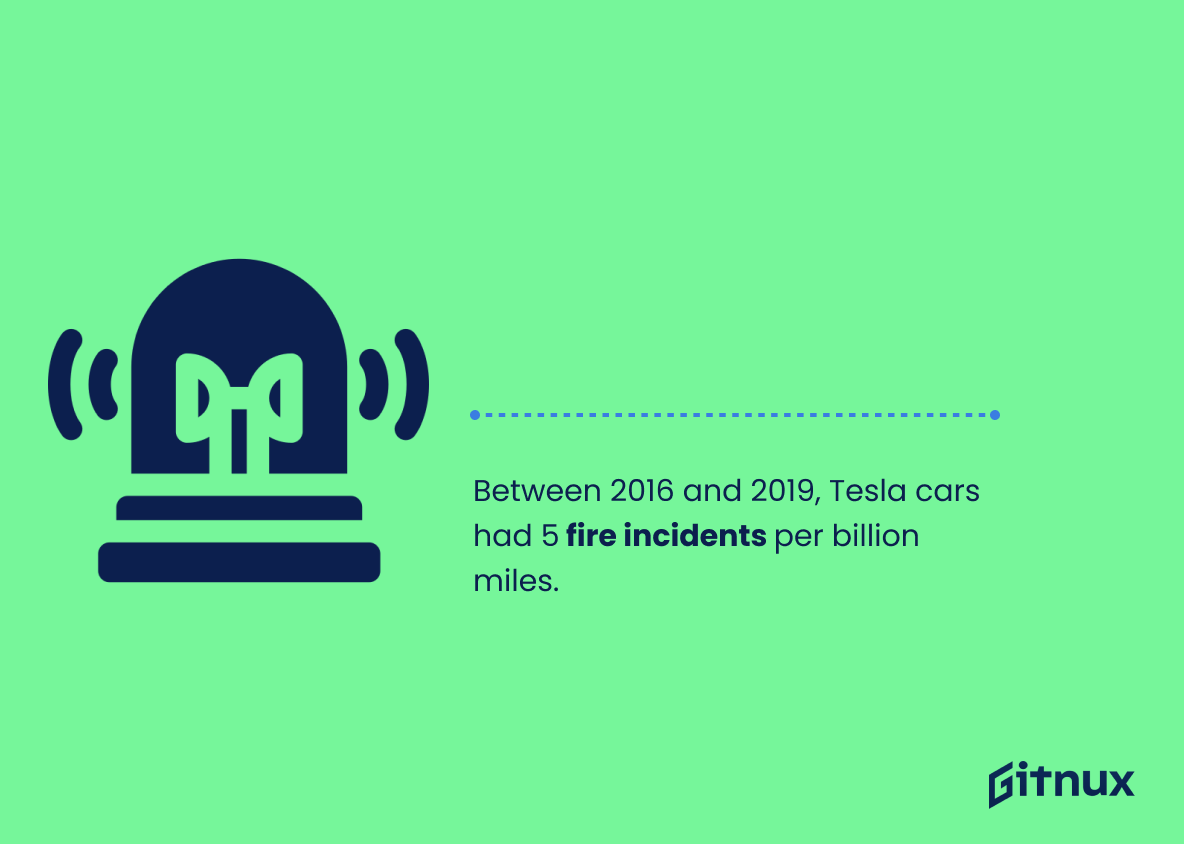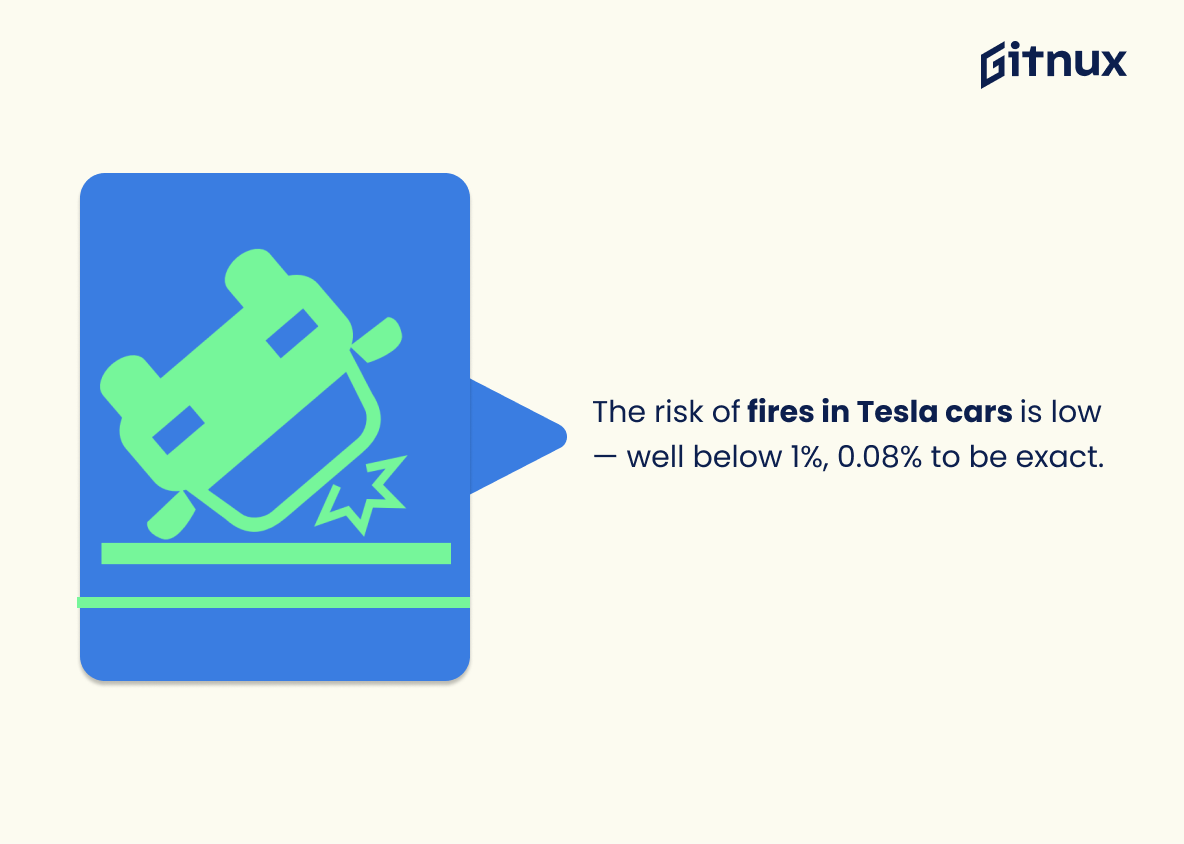Buckle up as we journey into the electrifying world of Tesla, a name that has radically transformed the automotive industry with its groundbreaking electric vehicles. Yet amid the revolutionary acclaim, a specific topic has sparked a heated debate: Tesla car fires. Despite the undeniable technological prowess of these futuristic machines, there have been several reported incidents of them literally blazing trails. In this blog post, we will dissect Tesla car fires statistics, shedding light on how frequently they occur, the common causes, and the overall safety level of Tesla cars. As we steer through the maze of numbers and facts, our aim is not to ignite fear but to illuminate reality, presenting an unbiased perspective based on concrete data. Let’s put the pedal to the metal and delve into this incandescent issue.
The Latest Tesla Car Fires Statistics Unveiled
From 2012 to 2020, around 40 Tesla vehicles have been reported to catch fire.
The above intriguing statistic comprises a profound cornerstone around which the discourse on Tesla Car Fires pulsates. Its significance lies not only in underscoring the number of fire incidents involving Tesla vehicles since 2012, but also in providing a foundational understanding of the frequency of such episodes. A perspective on the overall safety levels of Tesla vehicles, their susceptibility to fire, and the factors that could potentially contribute to these scenarios can be gleaned from this data point. This statistic essentially serves as a torchlight, illuminating the path towards an enriched understanding and heightened scrutiny of the relationship between Tesla’s cutting-edge technology and fire safety.
There were roughly 5 Tesla car fires in 2019.
Bringing this statistic into focus paints a trusted picture of the rate of Tesla car fires in 2019. It grounds the discussion in tangible data and allows for a more nuanced understanding of the reality behind Tesla car fires. This figure of roughly 5 incidents functions as the pulse of the discussion, shedding vital light on the frequency of such occurrences. By grounding the conversation in real-world data, it allows readers to move beyond anecdotal knowledge about Tesla car fires, deepening their comprehension of the broader scenario.
From 2016 through 2019, there were five incidents of Tesla cars catching fire for every billion miles traveled.
Given the context of our dialogue on Tesla Car Fires Statistics, the interesting tidbit that, from 2016 through 2019, there were five incidents of Tesla cars going up in flames for every billion miles traveled, holds enormous weight. It conveys insight into the relative risk potential associated with Tesla vehicles, a crucial element in a user’s decision-making process when considering their next investment in transportation. Furthermore, this statistic serves as a comparison point in relative safety to other types of vehicles and across different models within Tesla itself, illuminating data aspects that often reside in the shadows. It is undeniably a breadcrumb in our trail towards a deeper understanding of the safety questions surrounding Tesla vehicles.
The risk of fires in Tesla cars is low — well below 1%, 0.08% to be exact.
Delving into the heart of Tesla Car Fire Statistics, this provocative figure of 0.08% shapes a compelling narrative, painting a picture of relatively low risk. With less than one percent denoting the likelihood of a Tesla car catching fire, this percentage becomes remarkably meaningful. It serves as an indelible imprint of Tesla’s reputation for safety, showing it in a confident light. This solitary metric serves as a beacon signaling the brand’s commitment to risk reduction and echoes the company’s innovative strides in creating safer, more robust vehicles. This statistic, tiny yet impactful, substantiates a key message of the blog post – dispelling fear and amplifying understanding about fire incidents linked to Tesla cars.
Conclusion
In sum, the statistics surrounding Tesla car fires depict a compelling narrative. Despite a handful of high-profile incidents, data suggests that Tesla vehicles are less fire-prone than their gas-engined counterparts. The cutting-edge battery technology used by Tesla, combined with the in-built safety systems, demonstrates the brand’s commitment to the safety of its users. Nevertheless, as with all new technological advancements, it remains imperative to continuously pursue improvements and enhancements. Transparency about these incidents combined with a commitment to safety will only solidify Tesla’s place at the forefront of the electric vehicle revolution. While sensational headlines might spread fear, the tail of the data tape stresses that Tesla is a safe option for electric mobility.
References
0. – https://www.www.greenbiz.com
1. – https://www.insideevs.com
2. – https://www.www.usatoday.com
3. – https://www.fortune.com




